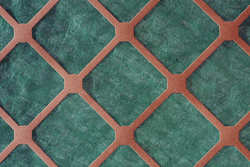Do Not Display
When you’re thinking about HVAC air filtration, there are basically two main options: HEPA and MERV filters. These terms differ in both filtration media and efficiency rating. During an average day, the entire air volume inside your home circulates through the system filter many times. The type and quality of your system's air filter directly affects the health and comfort of your indoor environment. It also impacts system energy efficiency as well as monthly operating costs.
Here are some facts about HEPA and MERV filters to help you make an informed decision about which is most suitable for your home.
HEPA
Short for High Efficiency Particulate Air, HEPA filtration removes more than 99.97% of airborne dust, pollen, mold spores, bacteria, smoke, and other particulates. However, the drawback of HEPA filtration is airflow restriction. In a typical residential HVAC system, installing the thick HEPA filter in the standard duct-filter mount will reduce system airflow excessively. However, two HEPA alternatives are available for consideration:
Alteration of the home’s return ductwork to include a duct-bypass loop that diverts only a portion of airflow through the HEPA filter at any given time.
For limited spaces such as single rooms, stand-alone HEPA filtration units incorporating powered fans are widely available.
MERV
HEPA and MERV filters do differ, and MERV filters are the most common type for residential HVAC use. Filtration is rated according to the MERV (Minimum Efficiency Reporting Value) numeral—a number between 1 and 20. Here are some facts about MERV filters to help you make an informed choice.
MERV ratings below 5 are usually inexpensive fiberglass filters that trap only the largest visible particles of dust. They are not ideal to support optimum indoor air quality.
Filters with MERV ratings of at least 8 provide the best balance between cost, filtration efficiency, and airflow. These are typically pleated cotton or polyester filters which provide increasing efficiency up to MERV 13.
Filters rated MERV 14 and above may not be appropriate for standard residential use due to excessive airflow restriction.
For more information about the pros and cons of HEPA and MERV filters, talk to the professionals at Air Assurance.





